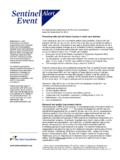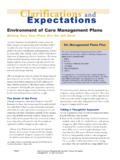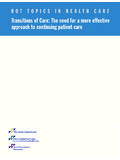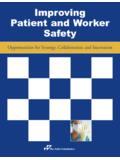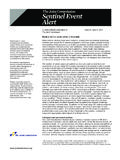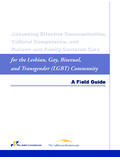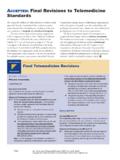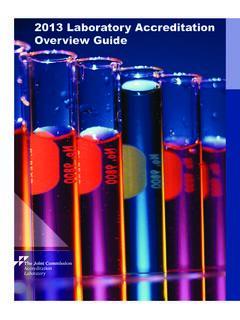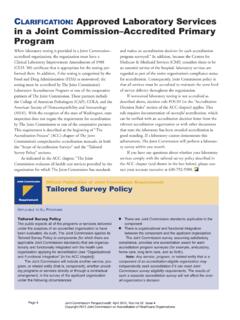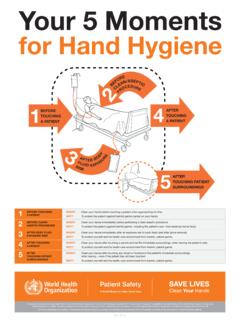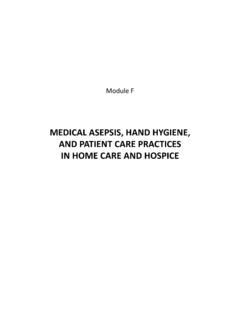Transcription of Measuring Hand Hygiene Adherence - Joint Commission
1 Measuring Hand Hygiene Adherence : Overcoming the Challenges Measuring . HAND Hygiene . Adherence : OVERCOMING. THE CHALLENGES. This monograph was authored by The Joint Commission in collaboration with the following organizations: The Association for Professionals in Infection Control and Epidemiology, Inc. The Centers for Disease Control and Prevention The Institute for Healthcare Improvement The National Foundation for Infectious Diseases The Society for Healthcare Epidemiology of America The World Health Organization World Alliance for Patient Safety This monograph was supported in part by an unrestricted educational grant provided by GOJO Industries, Inc.
2 , Akron, Ohio The Joint Commission Mission The mission of The Joint Commission is to continuously improve the safety and quality of care provided to the public through the provision of health care accreditation and related services that support performance improvement in health care organizations. 2009 The Joint Commission All rights reserved. No part of this publication may be reproduced in any form or by any means without written permis- sion from the publisher. Printed in the 5 4 3 2 1. Requests for permission to make copies of any part of this work should be mailed to: Division of Quality Measurement and Research The Joint Commission One Renaissance Boulevard Oakbrook Terrace, Illinois 60181.
3 630-792-5938. The monograph was produced as part of the Consensus Measurement in Hand Hygiene (CMHH) project. The goal of the CMHH project is to identify promising, practical techniques for Measuring Adherence to hand Hygiene guidelines. This monograph is the result of a two-year collaboration involving The Joint Commission and six collaborating organiza- tions: The World Health Organization (WHO) World Alliance for Patient Safety (WAPS), the Association for Professionals in Infection Control and Epidemiology, Inc. (APIC), the Centers for Disease Control and Prevention (CDC), the Society for Healthcare Epidemiology of America (SHEA), the Institute for Healthcare Improvement (IHI), and the National Foundation for Infectious Diseases (NFID).
4 The findings and conclusions in this report are those of the authors and do not necessarily represent the position of the Centers for Disease Control and Prevention or any of the other collaborating organizations. The project was funded in part by an unrestricted educational grant from GOJO Industries, Inc., Akron, Ohio, which had no involvement in the design, implementation, analysis, results, or review of reports from the project. Many of the examples included in this monograph come from self-reported methods, tools, and data submitted by health care organizations to the CMHH project, as well as published literature.
5 Examples included in this monograph are intended to aid health care organizations in their own hand Hygiene efforts and should not necessarily be considered evi- dence based. Inclusion of any reference or example should not be construed as an endorsement of any measurement method, product, treatment, or program discussed therein. The inclusion of a vendor, product name, or service should not be con- strued as an endorsement of such vendor, product, or service, nor is failure to include the name of a vendor, product, or service to be construed as disapproval.
6 The CMHH project staff are solely responsible for the monograph content. We have worked to ensure that this mono- graph contains useful information, but this monograph is not intended to be a comprehensive source of all relevant information. In addition, because the information contained herein is derived from many sources, the Joint Commission and its collaborating organizations cannot guarantee that the information is completely accurate or error free. The Joint Commission and its collaborating organizations are not responsible for any claims or losses arising from the use of, or from any errors or omissions in, this monograph.
7 For more information about The Joint Commission , please visit CONTENTS. Executive Summary xvii Introduction xxi Purpose and Intended Audience xxi The Consensus Measurement in Hand Hygiene (CMHH) Project xxi Why Measuring Adherence to Hand Hygiene Guidelines is Important xxii Challenges to Measuring Hand Hygiene Adherence : Why it is Not Easy xxii Scope of this Monograph xxiii References xxiv Chapter 1: Hand Hygiene Guidelines: The Foundation for Measurement 1. Factors Influencing Adherence to Hand Hygiene Guidelines 2. Hand Hygiene Indications, Opportunities, and Actions: Understanding the Terminology 2.
8 Key Points, Chapter 1 5. References 5. Chapter 2: Developing a Strategy for Measuring Hand Hygiene 13. Why Do You Want to Measure Hand Hygiene Practices, and What Are Your Organization's Goals? 13. What Elements of Hand Hygiene Do You Want to Measure? 13. How Do You Want to Measure Hand Hygiene ? 14. Using Multiple Methods to Measure Hand Hygiene 15. Key Points, Chapter 2 16. References 16. Chapter 3: Observing Adherence to Hand Hygiene Guidelines 19. Strengths and Limitations of the Observation Method 19. Components of the Measurement Method 20. Selecting Which Opportunities to Measure 20.
9 Deciding What Aspects to Observe 20. Type of Product or Agent Used 20. Thoroughness of Cleansing 20. Glove Use 21. iii Measuring HAND Hygiene Adherence : OVERCOMING THE CHALLENGES. Determining Who to Observe 21. Conducting Observations 22. Dealing with Double Counting Opportunities 22. Determining When and How Frequently to Observe 22. Determining How Many Observations Are Needed 23. Determining Where to Measure: Structuring and Scheduling Your Observations 24. Selecting a Sample of Health Care Workers or Patients to Observe 24. Determining Who Will Conduct Observations 25.
10 Infection Preventionists 25. Advantages 25. Disadvantage 25. Other Personnel 25. Patients 25. Overt Versus Covert Observation 26. Privacy Considerations 28. Using Technology in Observations 28. Standardizing Observation (Consistency and Reliability) 29. The Importance of Observer Training and Assessing Reliability 29. Documenting Your Methods 29. Determining How to Calculate Adherence Rates 29. Item-by-Item Measures 30. Composite Measures 31. All-or-None Measures 31. Key Points, Chapter 3 32. References 33. Chapter 4: Measuring Product Use 53. Strengths and Limitations of the Product Measurement Method 53.
